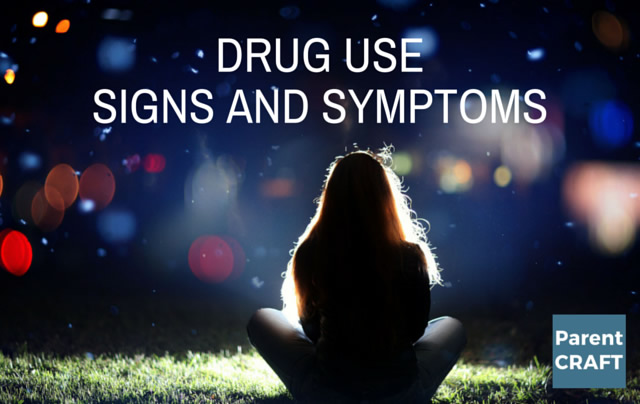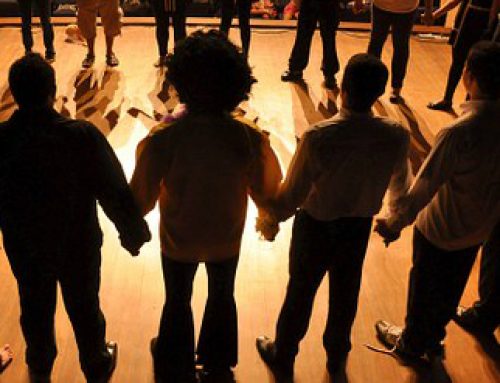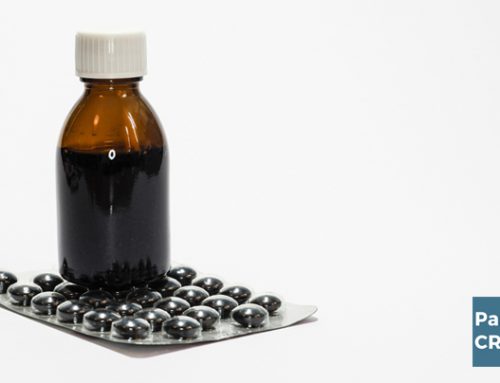Is it Drugs or is it Just Teenage Angst? Sure, you’ve been a parent for a long time now, but not too long that you have forgotten how navigating life as a teenager is a challenge. Just getting used to new hormones and feelings is enough to turn your “little princess” or “huggy bear” into something more… colorful. Add stresses from school, family, friends, afterschool jobs and you can understand how our children look for relief just like we do. Sometimes they look to drugs to fit in or to escape or even a bit of both. Sometimes all it takes is one cigarette to turn your teen off tobacco for good, but in other cases, trouble lies ahead.
So, how do you know if your teen’s behavior is normal or troublesome? The biggest thing to look out for is any sudden change in behavior. If your cheery and bright teenager suddenly sports a dark cloud over their head, it is worth noting. However, don’t jump to conclusions too soon, just observe. If you start to see an increase in the following, there might be a problem:
- Your teen experiences mood swings at a rapid rate. (Going from sour and irritable to happy and bouncy in a matter of minutes for instance.)
- Your teen starts to miss school or doesn’t show up for work shifts.
- Your teen starts to withdraw more often from family time.
- Your teen becomes secretive on where they’re going and more protective of their room.
- Your teen asks for money for no apparent reason and more often.
- Your teen no longer takes an interest in their grooming habits.
- Your teen no longer takes an interest in activities and hobbies that they used to love.
- Your teen changes their sleeping routine. If they were a night owl, now they go to bed early or just the opposite for no apparent reason.
- Your teen has no motivation to do anything and has an unusual lack of energy.
- Your teen’s eyes appear to be red or glassy looking.
- Your teen has a runny nose or sniffles a lot.
Social Drugs or Addiction?
Some people seem to be able to dabble in all kinds of drugs and suffer no long term effects while others become slaves to drugs. Just like some people are more prone to allergies or are more susceptible to colds, drugs affect different people in different ways. Factors that can increase your teen’s chances of troubling drug abuse and addiction include:
- Neglect, abuse or traumatic events your teen may have experienced as a child.
- Mental disorders, depression or anxiety
- Early use of drugs
- Relatives with drug or alcohol abuse and addiction
- Those who start with smoking or injecting needles into their body tend to have more addictive behavior.
- Highly addictive drugs like meth, crack cocaine and oxycodone, and Ecstasy have been reported to be addictive much faster than other drugs
Hope or Hopeless?
Some may think that overcoming drug abuse behavior can be mastered by simple willpower while others believe that any drug use is creating a death wish. Both are wrong. The longer a person uses a drug, the harder it will be for them to stop using, but no one is a lost cause. One doesn’t have to completely destroy their life before they will be willing to get help.
Some will also claim that drug addiction is a disease and therefore the user is helpless. Most experts will agree that addiction is a brain disease that can be treated with therapy, medication, exercise and other similar treatments. So know this – there is hope.
Know the Signs
In addition to the signs above about general use of drugs, here are a list of different drugs and the symptoms one can develop from using them:
Cocaine
Cocaine is a stimulant drug, which means it speeds up the central nervous system and leaves users with a feeling of exhilaration. Those who use cocaine may appear to be confused, anxious or depressed. They may develop a short fuse, a mistrust of others, have impaired thinking, become confused easily and experience odd hallucinations. Their emotions can run the gamut of from being anxious to feeling depressed. These people can’t sleep, have no appetite for food, become very talkative and even scratch a lot. More about Cocaine.
Prescription Drugs
There are many different prescription drugs, which means there are several signs and symptoms people show when they start using them. The abuse of opioids – pain relievers – produce symptoms similar to using heroin. A person gets in a state of euphoria combined with a dry mouth, warm flushing of the skin, absence of pain, heavy extremities and clouded mental functioning. The abuse of central nervous system depressants – for relieving anxiety, produce sedating effects. Warning signs of this kind of abuse include the lack of coordination, disorientation, sluggishness, shallow breathing and slurred speech. In contrast, other prescription drugs have opposite effects. The abuse of stimulants – for treating Attention Deficit Hyperactivity Disorder (ADHD), produce symptoms similar to cocaine use – Users are more energetic, overly talkative, can’t sleep, and lose their appetite. More about Prescription Drugs.
Ecstasy and Molly
Those who dabble with Ecstasy or Molly will experience a different perspective on sound, light and touch, but as the fun starts to wear off, they may complain of having muscle cramps, nausea, chills and/or unusual sweating. They might also have a fever and loss of appetite.
Heroin
Users of heroin can become highly productive or be of no use to anyone. Initially there is a feeling of euphoria followed by a great sleepiness, reduction in pain and lack of awareness of their surroundings. These drugs can cause constricted pupils, clammy skin, runny nose, constipation, slurred speech, memory problems, depression and confusion. People who struggle with heroin addiction appear very pale, and look gaunt or skeletal. If the user is injecting the heroin he/she will also have needle marks which can be found anywhere on the body.
Inhalants
Users of inhalants are attracted to the feelings of euphoria which can lead to moments of silliness and giggling. However, these tend to be followed by dizziness, headaches, fainting and even unconsciousness. Prolonged use can lead to memory loss, emotional instability, lack of reasoning, slurred speech, clumsy behavior, eye flutters, tremors, a staggering gait, loss of hearing and smelling and even brain atrophy. If used too long, these symptoms can become permanent in the form of brain damage.
LSD
Those who take lysergic acid diethylamide (LSD) are looking for the euphoria or a sense of power that it brings but at times they may experience a “bad trip” and have hallucinations, feelings of losing control, rapid mood swings, delusions or hallucinations. A person using LSD tends to have dilated pupils, loss of appetite, a discoloration of their skin, sweating or chills, and sleeplessness.
Marijuana
Becoming more accepted as a harmless drug, many still consider “Mary Jane” to be a “gateway” drug that will lead the user to stronger and more powerful drugs. As expected, Marijuana use will cause a feeling of euphoria for the user as well as a stronger sense of visual, auditory and taste perception. However, using marijuana will cause compulsive eating, bloodshot eyes, dry mouth, a sickly sweet smell on their body and hair, fits of laughter, forgetfulness, short-term memory loss, heavy lethargy, slow motor skills and strong mood changes and paranoid thinking.
Meth
These people tend to be restless and can’t sit still. They survive daily on little or no sleep. Their pupils tend to be dilated. They might complain of feeling dizzy, having blurred vision, feeling confused and unusual sweating. They talk a lot and get excited quickly. They become less hungry and lose weight rapidly. They may begin to believe that they are more powerful than they really are and become more violent or just the opposite fighting fears, paranoia, anxiety or depression.
Bath Salts
Represent a group of recreational designer drugs, less commonly known as synthetic cathinones which work similarly to Ecstasy and cocaine. In addition to an increase in energy and sociability, they cause high blood pressure, and can induce chest pains, paranoia, panic attacks, hallucinations, delirium and violent behavior.
Today’s drugs are cheaper and more dangerous than ever before.
If you catch your teenager smoking marijuana, you might assume that what he is smoking is similar to what was available when you were young. It’s just a mild high and harmless experimentation, right? Wrong.
Today’s drugs are stronger and cheaper than ever before. And it’s not just marijuana; hard drugs like heroin and cocaine are more potent and widely available today than in decades past. Furthermore, new street drugs are constantly being developed. These powerful derivatives offer new highs that tempt youth across the country.
Potency increases
In the United States, the purity of heroin and cocaine, as well as the potency of cannabis, has dramatically increased. According to the British Medical Journal, the average purity/potency of heroin increased by 60 percent, cocaine by 11 percent and cannabis by 161 percent (between 1990 and 2007, the last years for which data is available). This equates to more powerful highs and drugs that are incredibly addictive.
Prices decrease
If the drugs become stronger, you might assume that the prices would in turn go up. Yet in the U.S., the average inflation-adjusted and purity-adjusted prices of heroin, cocaine and cannabis decreased by 81 percent, 80 percent and 86 percent, respectively. That means your child has access to incredibly strong drugs at a fraction of what they cost in the past. Be a guiding light
It’s doesn’t matter where you live – drug addiction is an epidemic.
If you take the initiative, you can help your children understand that they need to make good choices for a brighter future. Considering the strength and availability of today’s most popular drugs, it’s never too early to intervene.






